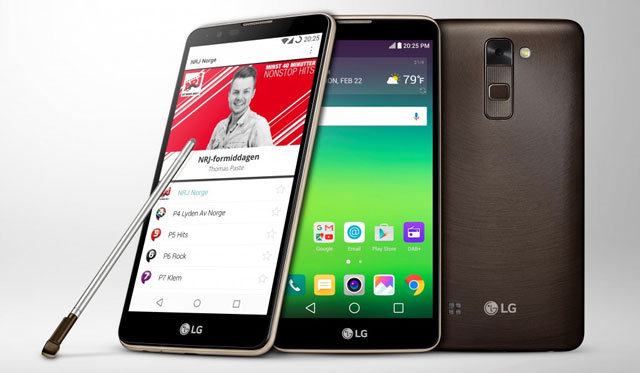
In what is being seen as a significant development for the digital audio broadcasting industry, LG Electronics has unveiled the world’s first smartphone that supports the DAB+ standard.
Industry players hope the move by the Korean consumer electronics giant will spur other smartphone manufacturers to include DAB+ receivers in their future handsets. The launch of the device comes as South Africa makes progress with a trial of DAB+ technology.
LG describes DAB+ as the de facto standard for digital radio broadcasting.
LG’s new smartphone, which is called the Stylus 2, features a DAB+ chipset and an app that allows customers to receive digital radio broadcasts out of the box.
A technical interface allows broadcasters to develop their own apps in which Internet services complement broadcast radio, LG said.
Users will be able to access more radio channels with DAB+ than traditional FM broadcasts, LG explained in a statement.
“Unlike regular radio apps that stream large amounts of data, DAB+ radio provides excellent audio quality for free, as it uses no data,” the company said.
DAB+ is eventually expected to replace FM analogue radio and already reaches more than 500m people in 40 countries.
The South African Digital Broadcasting Association (Sadiba) and industry body WorldDAB are scheduled to unveil the new device at the SADC Digital Sound Broadcasting Workshop in Lesotho on Tuesday.
Sadiba recently joined WorldDAB as a full member and now serves on the WorldDAB steering board. It’s the first time Africa is represented on the board, says Sadiba chairman Lynn Mansfield.
Though South Africa hasn’t yet switched on commercial digital audio broadcasts, it has been running a technical trial since late 2014.
In 2012, Sadiba and the National Association of Broadcasters set up a working group for the trial, which has 77 members participating.
According to Mansfield, the trial is being used to test the technology against a number of criteria, including end-to-end technical functionality (studio to receiver); the extent of coverage in moving vehicles; signal permeability (building penetration); interference and clutter on coverage; and audio quality at different bit rates.
The trial consists of two transmitting stations, one in Johannesburg and the other in Pretoria, providing coverage to an area that is home to about 11m people. The trial is, however, closed, with limited public participation.
Once the trial has been completed, it is expected that the next step will be for the communications regulator, Icasa, to issue an invitation to apply, which should then lead to the commercial launch of digital radio in South Africa. — (c) 2016 NewsCentral Media




